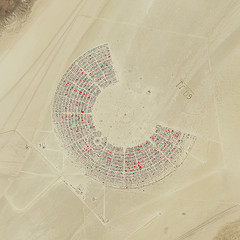
In Britain, it’s usually Banksy who’s associated with free-wheeling art in the streets. But now, sociologist and performer Tom Shakespeare is taking what might be an even more radical stance—not only should street art be outside the walls of the museum, museum art should go free, too.
“Couldn’t a gallery be more like a library and less like a temple?” Shakespeare asks in his Point of View piece for the BBC News Magazine. His idea is that a society is enriched by its art, and so, by locking up the great works of the world, we’re preventing the flourishing of society-level happiness. Hang a Monet in your house for a couple of weeks, and your whole worldview might change.
Maybe my modest proposal to break open the museum vaults will appear as fanciful as my support for the much-maligned Arts Council. In which case, let me finish by mentioning another way of democratising the visual arts – an experiment that is happening here and now and in the UK, no less.
Last week, the long list for Art Everywhere was published. This project, subtitled “A very, very big art show”, seeks to use hundreds of donated billboard sites to bring 50 of the best-loved works of British art into the public space for two weeks.
I think that Art Everywhere is an inspired idea. We are being asked to donate three pounds, and to choose which pictures from the long list will get this unprecedented exposure.
Just imagine: for two weeks, large scale artworks, in our streets. Not selling, not scaring, not “sloganising”, not titillating – just existing. Intervening silently in our lives with beauty and wonder and mystery.
More please.
For art lovers as well as scholars of utopias and happiness, this modest proposal might be a fantastic conversation starter—and we know that’s good for society.

